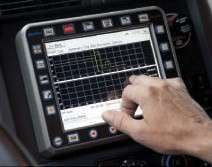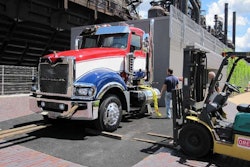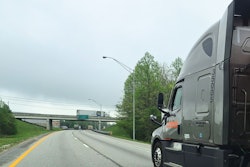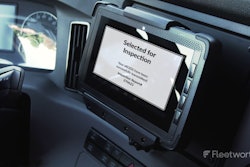E.F. McHenry, commenting on this post about trucking division on the subject of electronic onboard recorders for hours of service compliance, offered these 10 problems he saw with FMCSA’s intention to pursue an EOBR mandate — if you’ve missed the news as yet, Congress has beat them to it this week, though the Owner-Operator Independent Drivers Association has vowed to fight it.
Count ’em up here, and feel free to offer your own — or benefits — in the comments.

2) EOBRs create a sense that only driving counts as work. And this will tend toward pressure to minimize an account of on duty, not driving time, or line 4, by outright falsification.
3) EOBRs also create and compel a high-speed, high-pressure work ethic, where drivers operate under a sense of urgency to beat the clock.
4) EOBRs have been used and will be used by their motor carriers to treat hours rules not merely as limits to work but rather as mandates to work! This is very important, because it assumes a one-size-fits-all rule that everyone should accommodate. But this is just patently wrong.

5) EOBRs force conformity of productivity or the level of work performed among drivers.
6) EOBRs as already stated exert pressure on drivers to exhaust all available hours.
7) EOBRs, like their paper counterparts, rely on the integrity of a driver, since a falsification of line 1, 2 or 4 will render line 3 false and thus amount to a false log.
8) No empirical evidence has been offered to prove carriers who use EOBRs are safer than those who don’t.
9) EOBRs diminish the human factor, or human-need factor, making it negligible to say the least; only hours available and wheels rolling count. And finally:
10) The EOBR proposal is not a standalone rule. It is being driven along with a change in the retention of supporting documents [exempting some carriers from some supporting documents rules if they utilize EOBRs]. It is my considered opinion that this is meant to provide legal cover solely for a carrier from the improprieties of their drivers on hours. It is what I like to call the “Hang the Driver Out to Dry” policy. In other words, abandon the driver to his or her fate by creating a regulatory blind spot for company audits and mitigating legal culpability for the company alone for what or how the driver is logging on line 4. Should a driver be involved in a fatality accident, the company will fall back on the EOBR and new policy for supporting documents. But the driver will have no such shield for themselves. The courts will subpoena all supporting documents and any paper trail and compare it against a driver’s line for on duty, not driving: line 4. The documents policy change will shield the carrier from such scrutiny. This is the worst thing that not even OOIDA is addressing. –E.F. McHenry, commenting on news of industry division on the subject of electronic on-board recorders at OverdriveOnline.com.
Thoughts?













